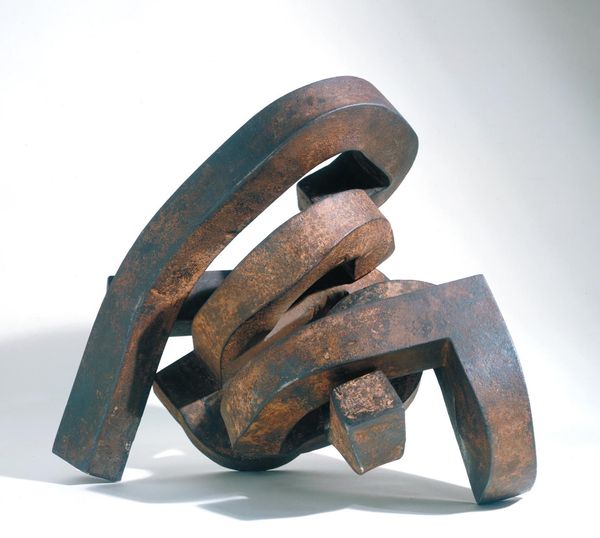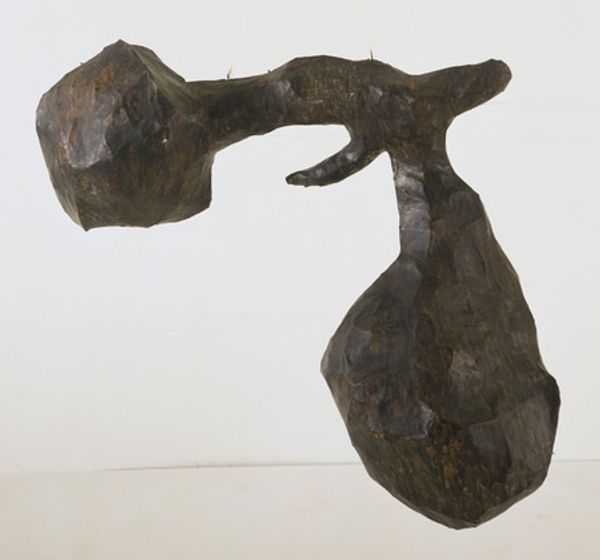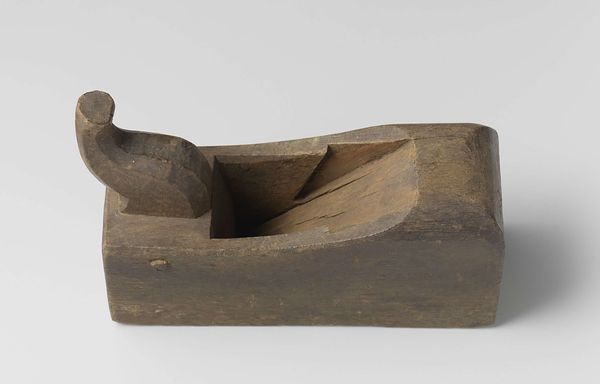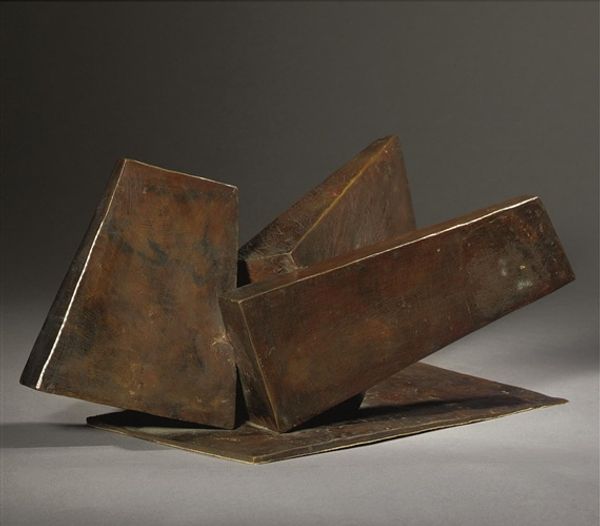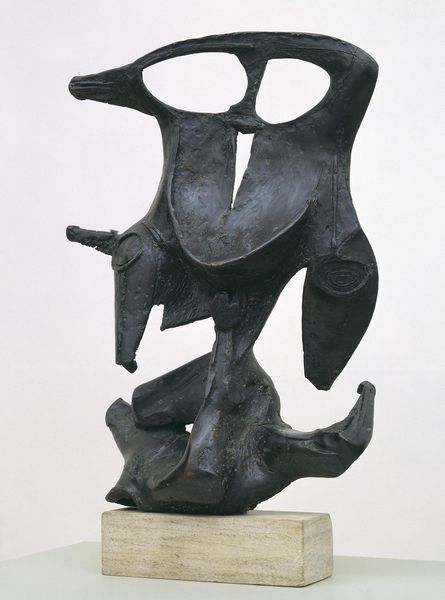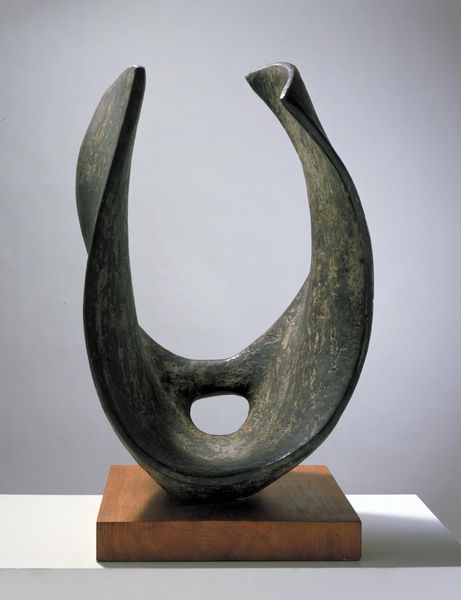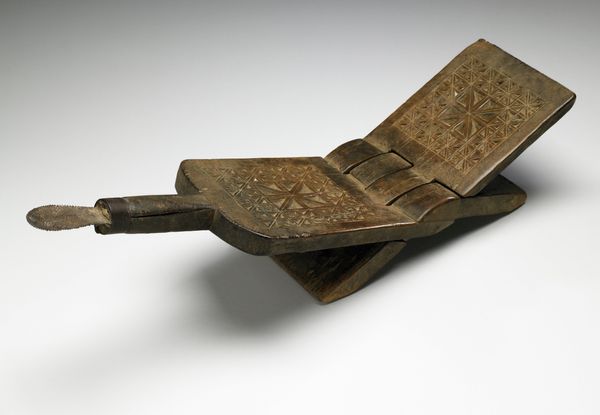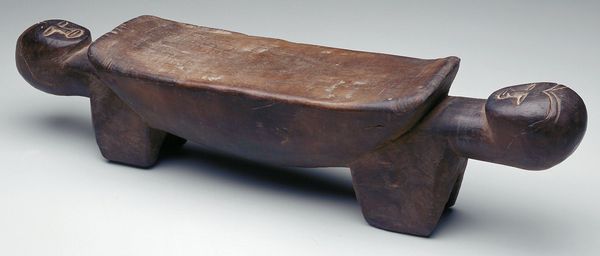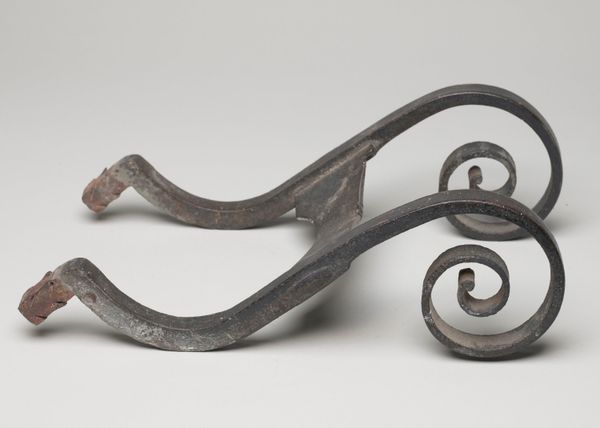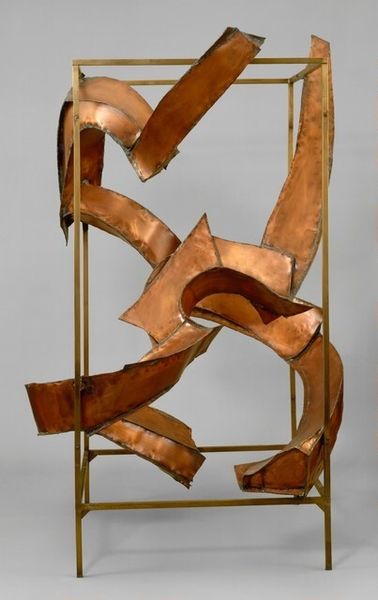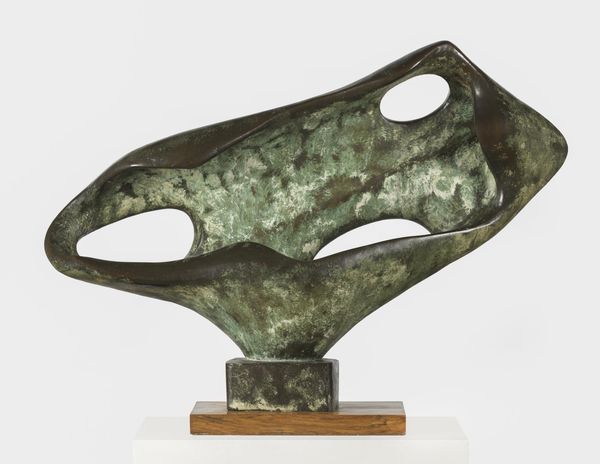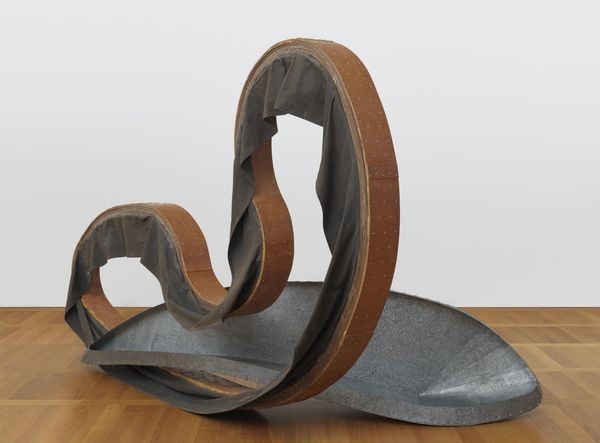
Copyright: Public domain
Curator: Let’s discuss Julio Gonzalez's "Reclining Figure" from 1934, a compelling piece rendered in metal. Editor: The rust, the raw shapes...it projects a kind of desolate beauty. Angular, powerful, but sorrowful somehow. Curator: It's fascinating how Gonzalez merges abstraction with the recognizable form. Given the historical context, the work could be seen as reflecting the anxieties of the interwar period, the looming threat of industrialization, and the fracturing of the human experience. The use of metal, a distinctly modern material, reinforces this connection. Editor: Absolutely, but let’s consider the formal elements. The open form of the sculpture – those curved lines juxtaposed against the sharp angles – creates an interplay of positive and negative space that really activates the surrounding environment. It is dynamic! Curator: And the concept of reclining? A traditionally passive pose, disrupted and reimagined with the starkness of welded metal. Is this vulnerability or resilience? I think it's both. Gendered readings could be complicated by the very materiality itself and the history of industry and labor. Editor: The way the light interacts with the surface texture… You can almost trace the artist's hand in the welding, emphasizing the object's materiality, it's like looking at bones. Each individual line adds definition to a skeleton in an entirely novel and non-representational approach. Curator: Perhaps the skeletal form speaks to the socio-political body and its woundedness, a meditation on the suffering of a population and time period facing multiple intersecting social, political, and economic crises. The starkness evokes both fragility and the enduring spirit. Editor: Looking at its formal qualities helps me see a sculpture about seeing. An artwork calling us to question our own perceptions of representation. Curator: Thank you. Understanding Gonzalez's historical placement within the tumultuous years of the 1930s, with the rise of fascism, it is very difficult for me to disconnect art-making from historical trauma. Editor: And seeing the work’s geometric forms I am intrigued how the forms encourage us to engage with space, light, and shadow.
Comments
No comments
Be the first to comment and join the conversation on the ultimate creative platform.
